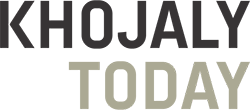From October 1991, Khojaly was entirely surrounded by Armenian forces. On 30 October ground traffic was cut off and helicopters became the only means of transportation. When a civilian helicopter was brought down over Shusha city, killing 40 people, helicopter traffic also ceased. From January 1992 the town had no electricity. Khojaly lived on due to the courage of its people and the heroism of its defenders.
Over the night of 25-26 February 1992, following massive artillery bombardment Armenian armed forces and paramilitary units, with support from the 366th Motorized Infantry Regiment of the former USSR, moved in to seize the town.
Once the assault began, the remaining inhabitants (about 2500 people), tried to leave, hoping to reach the nearest area under Azerbaijanis control. But most hoped in vain. They were either killed by gunfire from Armenian military posts or captured near the villages of Nakhchyvanly and Pirjamal. Others, mainly women, and children died from frostbite while wandering in the mountains. Only a few were able to reach Azerbaijani controlled town of Aghdam.
Undoubtedly, what happened in Khojaly was the largest massacre of the Nagorno-Karabakh conflict. In all, the assault and capture of the town took the lives of 613 of its people, including 106 women, 63 children, and 70 elderly. 1,275 were taken hostage, while the fate of 150 people remains unknown. The town was razed to the ground. In the course of that tragic night, 487 inhabitants of Khojaly were wounded, including 76 children; eight families were completely wiped out; 130 children lost one parent and 25 children lost both. Of those who perished, 56 were killed with particular cruelty: they were variously burned alive, scalped, beheaded, or had eyes gouged out, pregnant women were bayoneted in the abdomen.
Apart from denying responsibility for its occupation and military presence in the territories of Azerbaijan, official Yerevan does all it can to represent the massacre in Khojaly as an action by Azerbaijanis who allegedly obstructed the evacuation of the civilian population from the area and, even worse, gunned down their compatriots, to exploit large numbers of civilian casualties for their own internal political ends.
However, there is more than sufficient evidence, reports from numerous sources, including eyewitnesses, governments, intergovernmental and non-governmental organizations, and mass media, that testify to Armenia’s responsibility, including that of its political and military leaderships and subordinate separatist armed groups, for the crimes committed in Khojaly.
In its judgment of 22 April 2010, the European Court of Human Rights noted, in particular, the following: “It appears that the reports available from independent sources indicate that at the time of the capture of Khojaly on the night of 25 to 26 February 1992 hundreds of civilians of Azerbaijani ethnic origin were reportedly killed, wounded or taken hostage, during their attempt to flee the captured town, by Armenian fighters attacking the town”.
The Khojaly events took place in a period when Serzh Sargsyan, the former president of the Republic of Armenia served as the head of the illegal separatist regime’s “Self-Defence Forces Committee” and, accordingly, his recollections constitute one of the most important sources of evidence. The following words by Serzh Sargsyan during the interview with British journalist Thomas de Waal leave no doubt as to the perpetrator of the crime in Khojaly: “Before Khojali, the Azerbaijanis thought that they were joking with us, they thought that the Armenians were people who could not raise their hand against the civilian population. We were able to break that [stereotype]. And that’s what happened.”
In addition, Pascal Privet and Steve Le Vine narrate that, “Azerbaijan was charnel house again last week: a place of mourning refugees and dozens of mangled corpses dragged to a makeshift morgue behind the mosque. They were ordinary Azerbaijani men, women, and children of Khojaly”.
Moreover, On 3 March 1992, the New York Times also reported that “Fresh evidence emerged today of a massacre of civilians by Armenian militants in Nagorno-Karabakh, a predominantly Armenian enclave of Azerbaijan”.
A photographer of Reuters, Frederique Lengaigne reveals she had seen two trucks on the outskirt of Nagorno-Karabakh that filled with the dead bodies. “In the first one I counted 35, and it looked as though there were almost as many in the second… Some had their heads cut off, and many had been burned” she said.
However, the most decisive report came from Human Rights Watch, which recalls that “In February 1992, Karabakh Armenian forces-reportedly backed by soldiers from the 366th Motor Rifle Regiment… seized the Azeri-populated town of Khojaly. More than 200 civilians were killed in the attack, the largest massacre to date in the conflict”.
